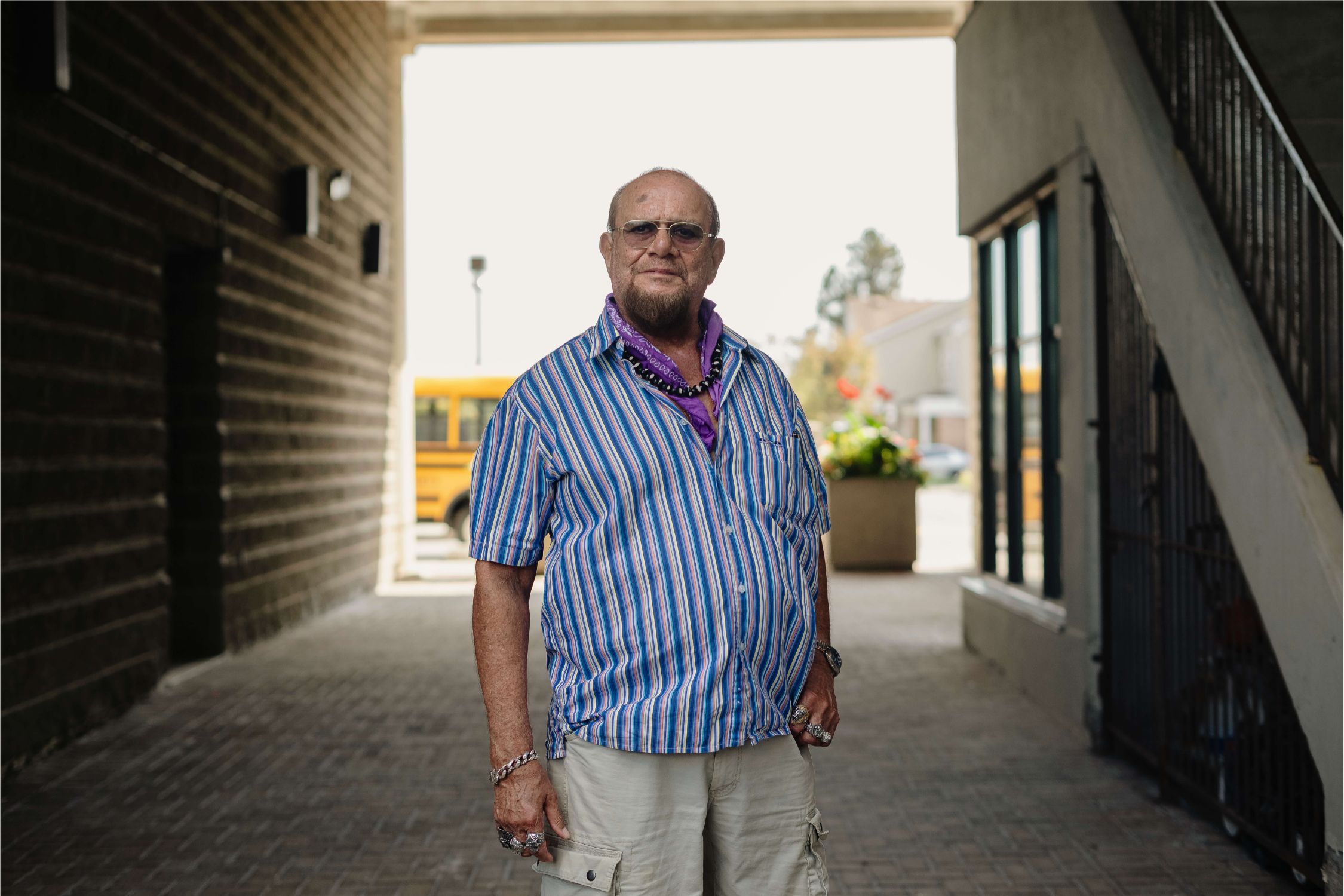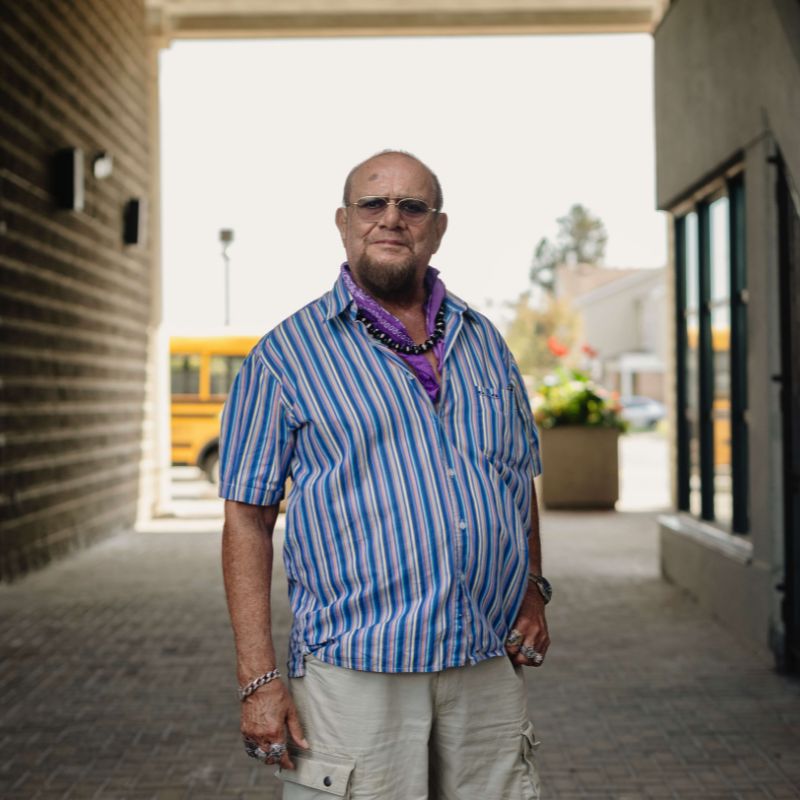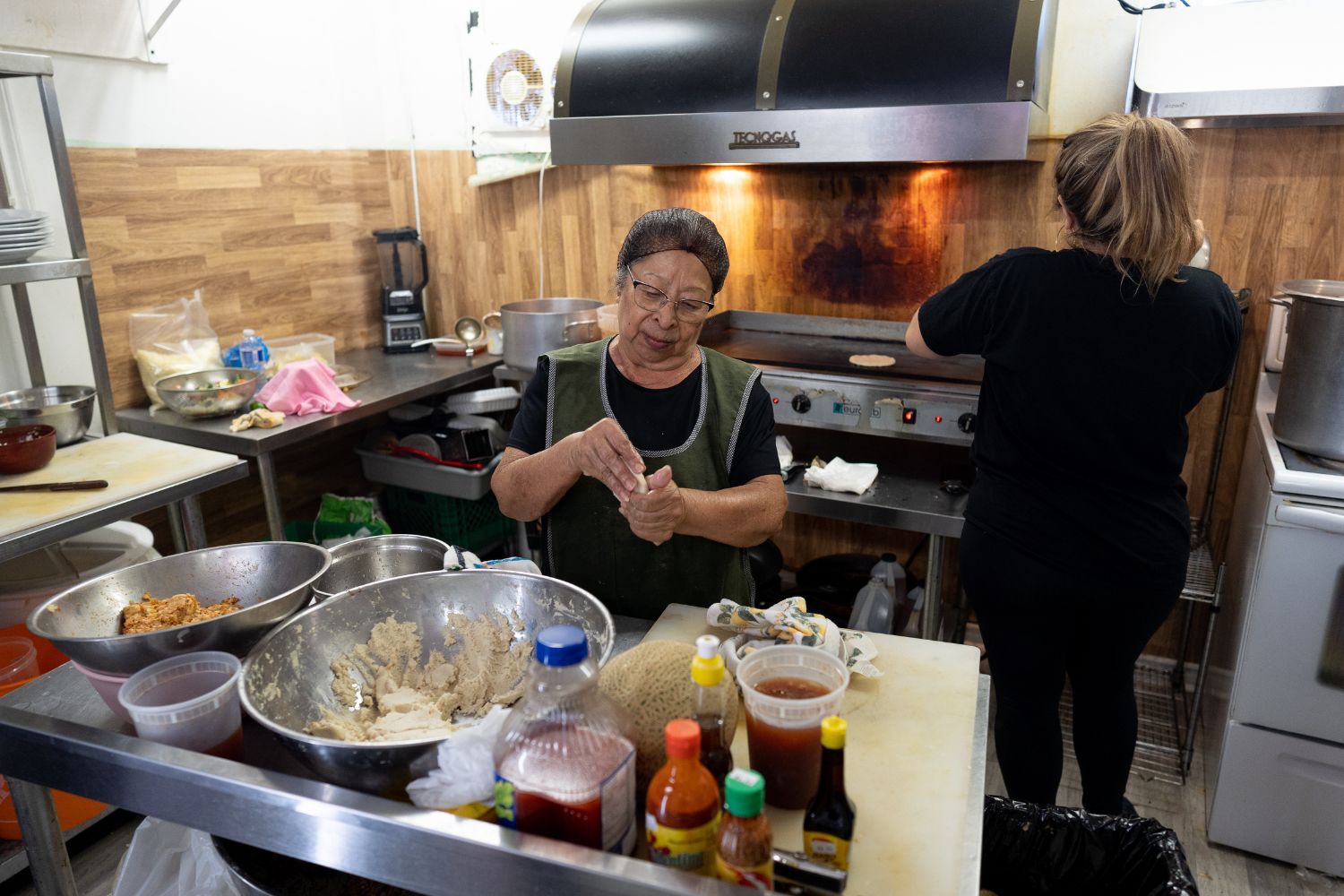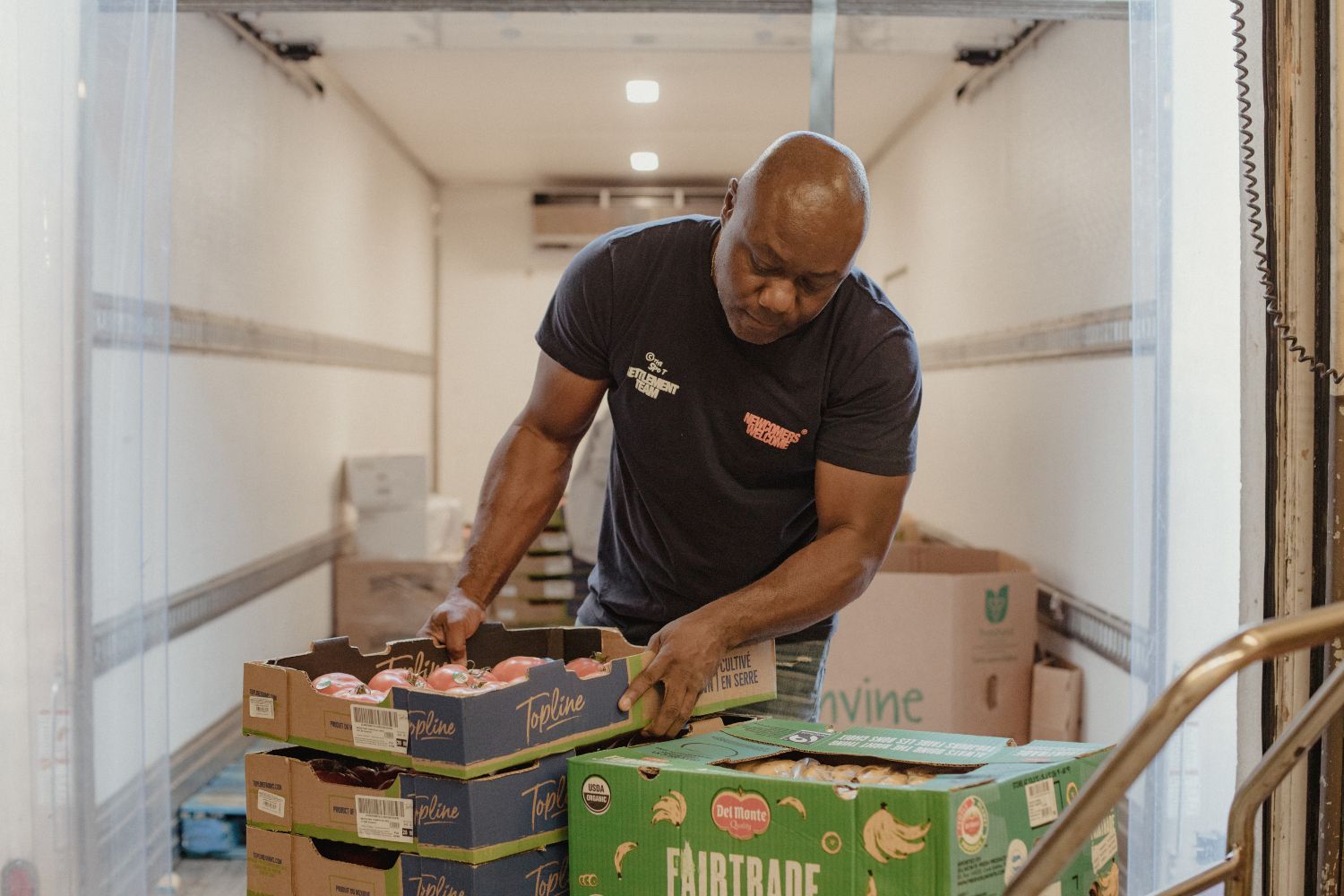

In the mid-1980s, the workers at the McDonnell Douglas aircraft plant in Malton had a problem: there was nowhere for them to live.
The aircraft plant (which would be purchased by Boeing in 1997 and demolished by 2005) was one of the largest in the world—a two-million-square-foot behemoth responsible for both the development of large airframe components and for churning out massive wings for planes like the MD-11, which spanned 165 feet.
The facility employed up to 14,000 workers. But in Malton, a northeastern Mississauga suburb that was then a heavily industrial area, there were few nearby residential options for this massive workforce. Most found themselves driving in from neighbouring suburbs, sometimes commuting for hours.
Glyn Wood was an engineer at the plant at the time. He spent hours on the road each day, driving in from Brampton. Tall and broad-shouldered, with a booming voice which carries hints of his childhood in India and his youth in England, Wood had always been passionate about union work. He’d joined his first union at 18, and at 21 had helped organize the first union in 25 years at an electronics company. When he arrived in Canada in 1979 and started work at McDonnell Douglas, Wood quickly became an active member of his local, serving on its executive board as trustee and joining various committees.
In 1986, when the two unions at McDonnell, Locals 1967 and 673, partnered with the union at nearby aircraft manufacturer De Havilland to address the housing issue, Wood was quickly recruited.
“As a member of the executive, they asked me to get involved,” he says.
The unions resolved to sponsor a housing co-operative in Rexdale, then an emerging residential community a fifteen-minute drive from the plant, with priority membership for their workers. If there wasn’t enough housing to go around, the workers decided, they would create their own. It was a daunting task. When Wood visited, the building was still a construction site, half-built with a mess of scaffolding piled high.
While organizing people at their place of work was one thing, organizing them to live as co-owners and neighbours was another. But over the following decade, Wood and his colleagues would build, populate, and run a co-op in a neighbourhood in which affordable housing would soon come at a premium. Three decades later, with workers once again struggling to find housing in an overpriced city, it’s worth asking if the lessons learned from an obscure co-op in Rexdale could be applied elsewhere.

Housing co-ops are best understood as miniature democracies. While they are functionally legal entities that own residential properties, co-ops are governed and often jointly owned by their residents in place of a private or corporate landlord. Decisions regarding everything from garbage collection to rent increases are made collectively, through a board of directors elected by and answerable to their tenants.
In Toronto today, demand for co-op units is so high that most of them have waitlists that only sparingly accept new applicants, usually on a first-come-first-serve basis. The process for securing a new unit is more comparable to landing Taylor Swift tickets than applying for a standard rental in the private market.
Despite this demand, the number of co-ops built in the past few decades is negligible. The majority of housing co-ops in Toronto were built in the 1970s and 1980s, during a period in Canadian history in which the federal government funded the development of non-profit and social housing to accelerate the growth of the city’s housing stock to meet demand.
“In the mid-70s, when the National Housing Act was amended, it made possible the building of co-ops,” says Tom Clement, the executive director of the Co-op Housing Federation of Toronto (CHFT). “The federal government took the lead at that point, and other governments stepped in. Co-ops could borrow from the Canada Mortgage and Housing Corporation at a fixed rate mortgage that was considered good at the time, around eight percent. The City offered up its land.”
Between 1973 and 1991, Canada built over 60,000 units of co-op housing, with an average of 16,000 units built or acquired per year, as part of a broader investment in social housing.
All this ground to a halt in the debt crisis of the late 80s and early 90s, according to Margaret Kohn, a professor of political science at the University of Toronto who researches the history and impacts of co-op housing. “No one, including the government, could afford to borrow more money. So, it retreated from some traditional responsibilities. The federal government, more or less, stopped funding housing altogether, and provinces and cities were also under strain.”
In 1995, the Mike Harris government cancelled the construction of 17,000 units of non-profit and co-op housing in Ontario alone. By 2016, development had dwindled to the point where only 1,500 units of non-profit or co-op housing were built.
“Only recently has there been a serious talk about the federal government playing a more active role in developing co-op housing,” says Kohn. “But if you look closely at what they’ve done in the federal budget, they’re overselling these enormous multi-billion-dollar investments, but a lot of those are actually tax incentives for people going into private market housing, and not broad investments in affordable housing. It comes down to money.”
When Glyn Wood began trying to find residents for McDonnell Douglas and De Havilland’s nascent co-op, he started by speaking with his co-workers. Over a span of a few days, he interviewed hundreds of workers from two factories, with a rotating cast of colleagues from their unions. After work, they would gather in the basketball court of Elmbank Community Center, steps away from the co-op development, and set up tables beneath the nets.
“It was three of us at a time, filling in forms and answering people’s questions, getting them acquainted with the idea of a co-op,” says Wood. “We stayed there for hours, till 9 or 10 p.m. Closing time.”
In short order, they had succeeded in assigning units to a number of workers, before opening applications to the local community. In September 1989, the Maurice Coulter Housing Co-op, named after a long-time employee of De Havilland, officially opened its doors.
“They showed me around the building and offered me whichever one- or two-bedroom unit I would like, as a founding member,” says Wood. “I’ve been there ever since.”
Maurice Coulter is one of just 185 co-ops in the Greater Toronto Region represented by the Co-operative Housing Federation of Toronto. Together, they provide over 18,000 units of housing to an estimated 50,000 residents.
Since its inception, says Wood, the price of living at Maurice Coulter has moved only “fractionally.” It still offers units ranging from one- to four-bedrooms, for $900-1400 a month. It’s only one of two housing co-ops in Rexdale, where the cost of renting an apartment has ballooned over the past two decades, and rentals under $1000 are virtually unheard of.
“Rents for one bedrooms are approaching $3000 in some cases,” says Peter D’Gama, the chair of the Etobicoke chapter of ACORN Canada, a grassroots group organizing around tenants’ rights across the country. “The only way newcomers are able to pay for that is by renting out a place with roommates, with people sleeping in the living room.”
The solution, he says, is simple. The City needs to work with the federal and provincial governments to build affordable and non-profit housing stock the way it did four decades ago.
“City-owned land should be made available for co-op housing and handed over to community groups and labour groups willing to fund it and get it off its feet,” he says. “Older housing stock and commercial areas should be secured under community land trusts.”
On a blistering hot day in July, planes drift low in their descent towards the airport in the sky above the Maurice Coulter Housing Co-op. The eight-storey building looms over its surroundings: a townhouse complex, a vast shopping plaza, and the lush green hills of Masseygrove Park to the north, furnished with playgrounds and a stout brick community centre. Today, the building contains some of the last affordable rental housing stock in Jamestown, a historically working-class neighbourhood within Rexdale enduring some of the harshest vicissitudes of Toronto’s housing crisis.
For Wood, the lack of affordable housing in Rexdale echoes a long pattern of under-investment in his community.
“I’m not very happy with the three levels of government overlooking North Etobicoke,” he says. “People feel really left behind. It’s this very lack of investment that’s one of the reasons why there aren’t many co-ops here, unfortunately.”
This lack of investment is felt in everything from transit to employment to public safety, with sporadic daytime shootings casting a pall over everyday life.
“I don’t like this area that much now,” he says. “It hasn’t improved in all the time I’ve lived here.”
Gone, too, are the majority of the workers who moved into Maurice Coulter at the beginning.
“In the early days, it was great fun,” he says. “We had parties and barbecues outside, with music playing. I miss it.”
Standing outside the co-op, I ask him why he has stayed, after all these years.
He points out his balcony, which is currently undergoing renovation. Workers scale the walls, silhouetted against the sunlight beaming off the co-op’s burnished windows.
“When it’s not under construction, you can see the CN tower from it, the whole expanse of the city,” he says.
“Besides,” he adds, “it’s the only place I can afford to live.”
The Finch West Issue is made possible through the generous support of United Way Greater Toronto and Metcalf Foundation. All stories were produced independently by The Local.








